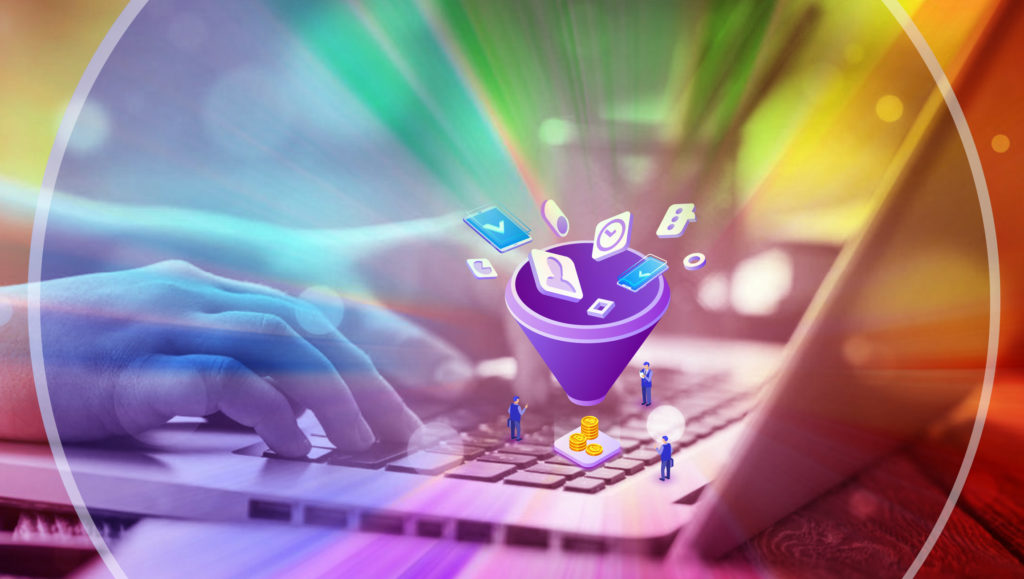The Never-ending Confusion between Demand Generation and Lead Generation:
The reason many B2B marketers even look-up for the meaning of Demand Generation is often to distinguish it with Lead Generation. Some even use the terms interchangeably. But, there is a solid line between the functions of both these terms. Nevertheless, Lead Generation can be considered as a subset of Demand Generation. We will come to this later.
To make things clear:
Demand Generation is all about creating awareness/interest about your company and its products/services. Here, you give away content freely just to build awareness about your company, products, or services.
On the other hand, Lead Generation deals with using content and various other Marketing tactics to collect details of prospects so that you can contact them in future.
Generally, “gated” content is provided in order to collect the contact information of the leads. For e.g., providing a research report after prospects fill in a form with their names and e-mail IDs.
Read More: Is Your Sales Proposal Process Putting Your Company At Risk?
So, What Exactly Is Demand Generation?
Demand Generation basically deals with creating a want for your offerings.
But Demand Gen doesn’t stop here! It may or may not amount to closed deals, but supports the entire Marketing and Sales cycle. It covers every touchpoint right from initial prospect to Lead Nurturing and Sales Enablement.
Demand Gen goes all the way to the first sale and cross-sell, and beyond that. It deals with all visible and non-visible touchpoints before a lead even enters your Sales funnel, and ends at client retention initiatives.
Marketo says, if done properly, Demand Generation can create awareness around the issues most relevant to your business, provide Sales the qualified leads it need to close deals, and position Marketing as a revenue generator instead of a cost center.
33% of professionals stated that generation of Marketing Qualified Leads (MQL) was their primary metric for determining success of a Demand Generation campaign, a report revealed.
Four Important Stages of Demand Generation
Among the various touchpoints across the buyer journey, there are four important stages that form part of a Demand Gen strategy:
Ø Brand Awareness
Ø Inbound Marketing
Ø Sales Enablement
Ø Client Retention
Brand Awareness
It is the very first stage in the Demand generation process. Brand awareness denotes the degree of consumer recognition of a product or service by its name. It measures a potential customer’s ability to recognize a brand image and associate it with a certain company’s products or services.
Methods of Brand Awareness:
- Brand identity and image
- Thought leadership
- Events and seminars
- Social Media presence
- PR management
- Comprehensive Product development
Events have been proven to generate the most number of leads in the B2B ecosystem, a report by MarketingCharts says.
Read More: How You Should Be Using Chatbots In Your Business
Inbound Marketing
Again, many marketers think Inbound Marketing and Demand Generation are the same. But these aren’t.
Inbound Marketing is a strategy that utilizes many forms of pull Marketing to create brand awareness and attract new business. It helps attract qualified prospects to turn them into leads and eventually, into paying customers.
Methods of Inbound Marketing:
- Content marketing
- E-mail marketing
- Website/Blog/SEO
- Lead generation
- Lead nurturing
- Targeted advertising
79% of B2B marketers consider e-mail marketing as the most effective method in the demand generation strategy.
Sales Enablement
As per Gartner, Sales Enablement consists of “the activities, systems, processes, and information that support and promote knowledge-based Sales interactions with clients and prospects.”
In a nutshell, Sales Enablement is all about providing your sales teams with the required knowledge, tools, and training to help them sell better and sell more.
Methods of Sales Enablement:
- Case studies
- Product demos
- Testimonials
- FAQs
- Fact sheets
Client Retention
While acquiring new business is important, there is more to it.Client retention is even more important. While there are up to 20% chances of a website visitor turning into a customer, there is at least a 60% chance that an existing customer will make at least one more purchase.
Retaining, delighting, and evangelizing your existing customers is critical for achieving continuous growth.
Methods of Client Retention:
- Great customer service
- Client marketing initiatives
- In-person events
- Exclusive offers
- Up-sells and renewals
Demand Generation forms part of any B2B, B2C, or B2G Marketing campaign. It directly contributes to the revenue of the organization owing to its capability of combining the marketing and sales verticals. In a time when the buying process is changing rapidly, it makes sure your Marketing efforts are relevant and influential to the core.





















